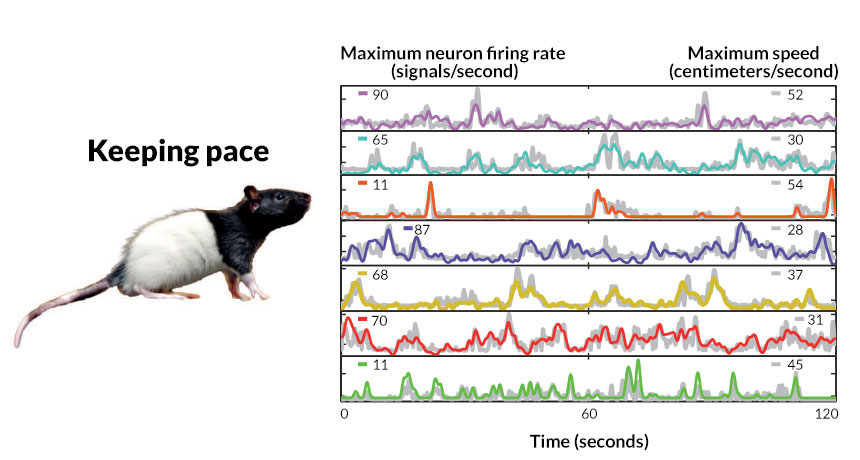‘Speed cells’ found in rats’ brains
Specialized nerve cells fire faster when feet are fleet

ON THE MOVE Speed cells’ activity (colored lines) change with rats’ swiftness (gray lines) as the animals move around an enclosure searching for chocolate crumbs as seen in this graph charting the activity of seven different neurons.
E. Kropff et al/Nature 2015